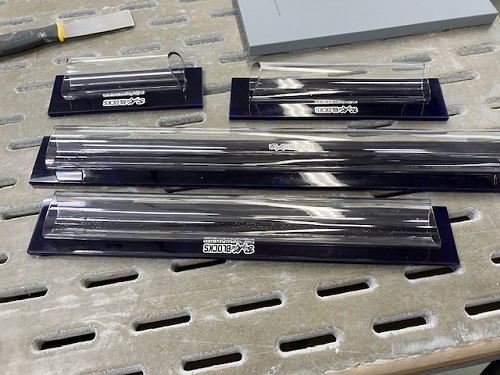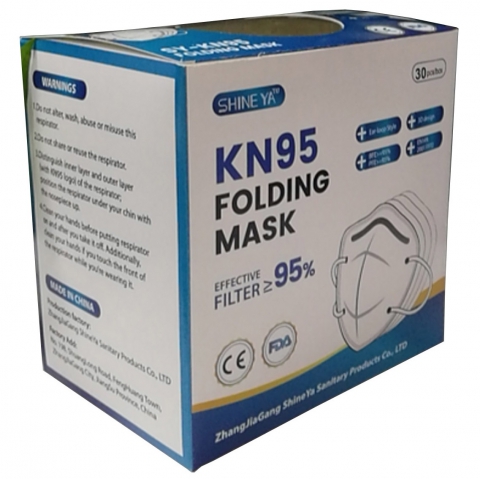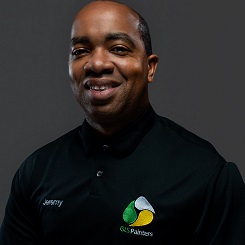Prep Talk: Hand sanding and automatic tools that get it done
2 February, 2023
2 February, 2023

I am a bit of a notorious sanding nut. We talk about this on a lot of the socials and groups online, so I thought I would share in APC how my product and process combo has evolved in recent years.
In my shop, I prefer to be in that “set up man” slot, focusing mostly on intercoat detailing. This way, I can assess everything that is happening on the front end of our system — prior to finishes — as well as all inter-coat activity and final finish quality. Working both ends from the middle has always been my best positioning, mostly because I don’t like doing the same thing all day long. Here are some of the tools I use to get the job done.
Time Saver
The first step for prep in my world is the Time Saver machine. The assembled cabinet doors, face frames and all wood items pass through this machine prior to entering the prep room. This machine can handle items up to 48" wide, flattening joints, squaring up edges and removing cups or crowns. While pricy, this machine reduces the subjectivity of sanding, thereby creating consistency. It does, however, leave some wavy evidence of its work on the surface, which is then handled on the human side.
Booth sanding with downdraft tables
Whether raw materials are prepped with planer knives or mechanical abrasives, there are always some sheen, tails or waves to be scrubbed out. The next step is for our raw materials person to inspect and low-grit prep all items in preparation for primer (for paint grade) or stain/clear (for natural finishes). We use Dynabrade DA (shop air) sanders at this stage because they are lightweight and cut really fast, and the dust is well controlled in a booth with a dowdnraft work table.
Spray time
Items go in labeled groups into the spray room for 2k finishing. The spray room is equipped to inhale air from the outdoors, filter it, cool or heat it, move it through the wall of booth filters and out of the building with minimal odor or detectable air flow. This environment allows us to spray at very low pressures, usually 50 psi or less, using pumps that run on the shop air system. Of course, product mixing, tip selection and spray technique still weigh heavily, but environmental control immensely improves your chances for success.
Turnaround times are relatively quick in this system. We can send a rack of doors through the booth for prime coat and have them out for sanding and cosmetic inspection within 90 minutes. That is impressive given that doors, drawer fronts and shelves require getting both sides and all edges coated.
Festool still rules the in-between coat prep realm, in my experience. We use the classic orbitals: DTS 400, RTS 400 and EC-TEC 125, all at high grits 240-320. Those are paired up with MIDI dust extractors. All of this is backed up by Fein Shop Vacs for work area and occasional surface vac duties. All of these tools run all day long, so there is no room for compromise. If a tool goes down, we lose money.
For cosmetics, we don’t mess around much with vinyl or fluff anymore. I’ve learned that the more automotive grade you can get in a shop-based setting, the more efficiently you will reach the quality standard. We use a resin based 1k fine putty. This type of product dries quickly, stacks well on itself and is sander abrasive friendly. As always, products drive process.
Depending on the situation — color, substrates, sheen — we sometimes do a second prime coat to fully block out wood grain and post primer cosmetics/ sanding. So it is either a 3 or 4 coat system.
The good news is that prep gets less labor intensive but more finesse-based the further you go into the finishing process.
Toward Finishes
For paint grade finish coats, we generally continue to sand in between coats with the power orbitals, supplemented by soft hand abrasives. However, there are situations where that can be risky. Sometimes with deep base colors, or clear finishes, or whitetwashes/glazes that are clear finished, we decline the risk of accidental burn-through with an orbital. Some specialty finishes just can’t be perfectly repaired if compromised.
Super fine sanding just prior to final finish is a difficult category to fill. Over the years, most of us have tried everything. I am well known for not being a fan of hand sanding — I avoid it whenever possible, but there are times when there aren’t many options.
Got some “Advice from a Young Tradesman”

Quite by chance, I crossed paths with a prolific craft/business visionary. If you haven’t heard of Noah Kanter, you (quite literally) should. He is the host of the popular podcast “Advice from a Young Tradesman,” available anywhere you can find podcasts.
Noah happens to run a paint company in my very own market. We teamed up on a door rescue project this year, where Noah did some deep prep on pricy but badly messed up interior doors with MDF panels. Noah had completely stripped these MDF door panels without impacting the finished edges of the adjacent stiles and rails at all. Its not a typical situation, but one that has to be done with precision. Noah confided that he had used this new hand block set to do it.
Enter the Big Kid Blocks. This was the dragon I’d been chasing to get my team out of the sand sponge/hand sand show. The BKB set seems inspired by automotive bar sanding, which is a relevant standard to measure our work against. I recently ordered a set of these blocks and they are definitely filling the gap that had been missing for us. They are lightweight with nice ergonomics, and their size ratios are ideal for both trim details and wider panels. It’s important, in my opinion, to get something between our hands and the abrasive when sanding manually.
Happy prepping!
About the Author

Scott Burt is senior editor of APC and owner of Topcoat Finishes in Vermont. He enjoys communication with
paint contractors at topcoatreview.com.




Add new comment